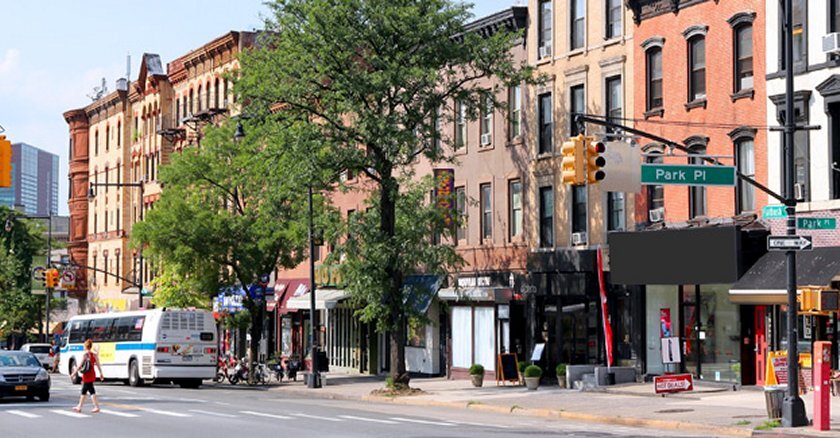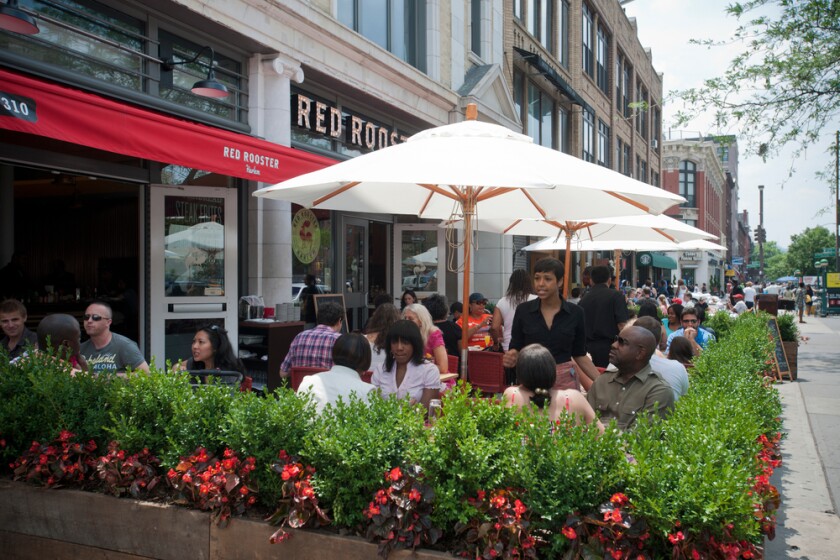
(U.S. Department of Housing and Urban Development)
I know this because I’ve come across a New York City Council document detailing three years’ worth of complaints about the problem. The report describes “outdoor parties/cookouts late into the night,” with a booming outdoor speaker and music that’s “very loud even with the windows shut.”
The thread of complaints started in 2019 with a posting about “a loud party in the middle of a residential block on a weekend evening.” In the summer of 2020, one of the building’s residents wrote in about “music blasting in the middle of a dense residential block. … Too loud to sleep through closed windows.” This past August, still another resident complained about “another party by the same group. Music been blasting since 8:30 p.m. and still going as I post this at 4 a.m. with no signs of stopping.”
Throughout all this, inhabitants of 525 made multiple calls to 311 asking local authorities to do something about the noise. Usually there was no response; sometimes an officer would arrive and warn the partygoers. They would quiet down briefly, then start up again a few minutes later. At the moment, things seem to be calming down, with the building management finally weighing in on the quiet side. A resident notified the council that Labor Day was peaceful and the issue looked like it was resolved, for the time being at least.
The situation on 21st Street isn’t that unusual in Brooklyn. Similar disputes are taking place in much of the borough. A study in 2019 found that it was New York City’s loudest borough, with far more noise complaints per capita than the rest of the city. But the volume of complaints has been rising in the other boroughs as well.
I can’t pinpoint the ethnicity of individual complainers or partygoers, but the battle of 21st Street is consistent with a pattern of conflict in gentrifying neighborhoods throughout urban America, where the newcomers, mostly affluent whites, want it quiet and longtime minority residents feel their traditional sources of enjoyment are up against discrimination. A 2018 study found that noise calls to 311 were rising twice as fast in gentrifying neighborhoods as in high-income enclaves and 50 percent faster than in poor districts.
YOU MIGHT EXPECT TO SEE A BACKLASH against all this anti-noise activism, and that is exactly what we are seeing. It’s a backlash with an unmistakable racial component. The activist Alycia Basquiat has been inveighing for several years against demands for quiet as a weapon gentrifiers use to stifle minorities. “Noise pollution,” she wrote recently on a blog called Antiracist Corner, “has been weaponized by privileged people, along with the government, in an attempt to push people of color and low-income people out of their communities.”
Basquiat argues that gentrification actually makes a neighborhood louder because the restaurants, clubs and theaters that arrive with the gentrifiers make more noise than the family businesses they replace. Many of these (displaced) institutions, she wrote in another blog post, “are integral to the culture of the areas that are being gentrified, so losing these venues is losing their culture.”
The journalist Xochitl Gonzalez reached a wider audience this summer with an article inThe Atlantic. “The bourgeoisie are safely shielded by the hum of their central air, their petite cousins by the roar of their window units,” Gonzalez wrote. She and her fellow Puerto Ricans, she said, “take pride in saying that we are a loud people.”
Gonzalez’ diatribe produced a backlash of its own. “The expectation that one abides by the rules and norms of a particular community while being a part of it isn’t oppression,” Nate Hochman wrote recently inNational Review. “It’s basic manners.” But how do you define rules and norms in a changing community? That’s not an easy question.
THE NOISE WARS ARE TAKING PLACE in a growing number of cities across the country. A gentrifying neighborhood in Washington, D.C., sparred over the level of sound produced not by late-night house parties but by a loudspeaker blaring out go-go music at a busy commercial corner. Complaints from new neighborhood residents forced the operator of the machine to turn it off, but it returned to action following a protest in the form of a block party featuring go-go performances. A petition drive to keep the music going led to the formation of a permanent activist organization called Don’t Mute DC.
Richmond, Va., has been arguing about urban noise since 2011, when city officials enacted a strict noise pollution law that critics derided as “sonic stop and frisk.” After a court invalidated the law as too vague, the city revisited the issue this year and came up with a new ordinance that set strict decibel limits but also reduced sanctions for violations from felonies to civil penalties. “We’re not trying to stop or be the party poopers,” one city councilor told a reporter. “We just want to ensure that if it’s bleeding over into neighborhoods and the communities as it has in the past, that we have a recourse as a city and as park officials.”
I was surprised to find out just how long urban communities have been arguing about loud disturbances. The Greeks enacted a noise pollution law in the 6th century BC. The Roman philosopher Seneca wrote that loud sound was an acceptable feature of life in a big city, then decamped for the suburbs because he couldn’t stand the volume.
New York has been in the noise-control business since 1906, when a group of citizens in Manhattan formed a Society for the Suppression of Unnecessary Noise and campaigned successfully for restrictions on steamboats, street vendors and any source of loud sound in close proximity to a hospital. When he was mayor in the 1990s, Rudy Giuliani took advantage of a cabaret license law to drive some nightclubs out of gentrifying neighborhoods. Just this year, New York Gov. Kathy Hochul signed the SLEEP ACT. “SLEEP” stands for “Stop Loud and Excessive Exhaust Pollution” — car-exhaust noise is another point of friction between gentrifiers and minorities in changing neighborhoods. The law fines auto-repair shops that alter vehicles to make exhaust sounds louder.
ALL OF THIS INVITES THE QUESTION of just how much noise is too much, and when it becomes hazardous to those exposed to it. Just for comparison purposes, a computer fan comes it at 20 decibels, a refrigerator at 40 and a dishwasher can register as high as 75 decibels. The general scientific consensus is that anything above 80 is not good for your hearing, and much of the noise in a dense urban area — traffic, subways, airplanes — rises above 85. Rock concerts sometimes reach 90 to 120 decibels, and it’s probably safe to assume some of the music generating noise wars in Brooklyn rises to that level. Bass sounds at high levels are the most disturbing to the average listener: They sometimes generate tactile as well as auditory discomfort.
In fact, though, there is some evidence that loud music isn’t the most serious noise pollution issue in big cities. Kate Wagner made this point rather persuasively in a 2018Atlanticarticle. “The noise that does the most harm doesn’t come from clubs and house parties,” she wrote. “Industrial noise poses the worst problem.” She cites leaf blowers, souped-up exhaust systems, and industrial boilers and furnaces as a greater threat to the urban ear. Wagner believes that loud house parties and noisy street boomboxes are at worst a minor health issue.
But that isn’t really the point in changing city neighborhoods. Their noise wars are about culture, not human health. And it’s not that easy to fix blame. Like many moral questions, large and small, this isn’t a matter of right and wrong, but a dispute between two plausible definitions of right. Personally, if I were a newcomer to a gentrifying urban neighborhood, I would be on the side of peace and quiet. But I can’t totally dismiss the argument of holdover residents that nighttime parties are a crucial component of their community culture. I don’t think they are just seeking to annoy the gentrifiers.
It’s hard to say where (or if) all of this will end. My guess is that as new arrivals expand their presence in communities like Flatbush, they will have the numbers, the connections and the organizational skill to get their way on the noise front. That’s mostly how things have worked so far. I wouldn’t call it a solution — I’d just call it the way things tend to play out in gentrified urban America.













